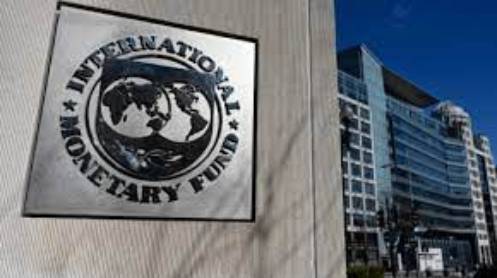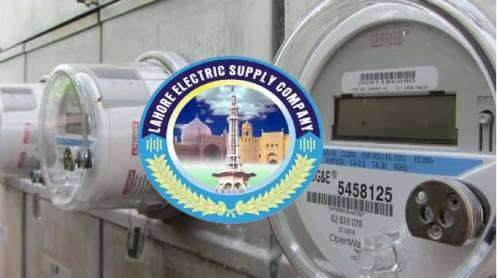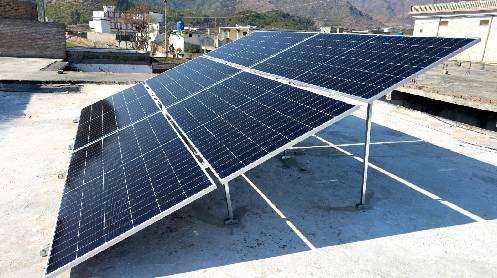Lender doesn’t agree with growth, CAD projections
ISLAMABAD: The International Monetary Fund (IMF) has revised Pakistan’s foreign loan requirements to $25 billion for this fiscal year — reducing it by $3.4 billion — and also lowered the economic growth projection to just 2%, turning down the government’s external as well as macroeconomic forecasts.
Finance ministry sources said the IMF had also lowered its inflation projection for the country to 22.8% for this fiscal year — reducing it from 25.9%.
The IMF did not accept the finance ministry’s projections for the current account deficit (CAD), imports, economic growth, inflation and gross financing requirements.
However, it adjusted all these numbers during the first review talks in comparison with the estimates of July this year.
The revisions to the gross external financing requirements — a sum of money needed to fill the CAD as well as the repayment of maturing debt — and to the macroeconomic projections were made during this week’s first review of the $3 billion bailout package.
The IMF remained successful in acquiring a date for the general elections and in return ignored a few critical areas, which in the past had become a cause for the failure of the previous $6.5 billion bailout package.
It also brought the activities of the Special Investment Facilitation Council under its purview.
The finance ministry spokesperson, Qamar Abbasi, did not respond to a request for comments.
In comparison with July this year, the IMF lowered the foreign loan requirements for this fiscal year from $28.4 billion to $25 billion — a reduction of $3.4 billion.
Read Pakistan to stay tethered to IMF
In four months, the government has already borrowed $6 billion while it expects rollovers of $12.5 billion.
The remaining needs are about $6.5 billion in addition to the efforts for timely securing the $12.5 billion debt rollovers, said the sources.
Finance Secretary Imdadullah Bosal on Thursday said the interim government was comfortable that it would secure the needed financing to remain afloat.
However, there will not be much respite for the government as the estimated available financing has also been cut by $3.7 billion because of the problems in acquiring loans through floating Eurobonds and from foreign commercial banks.
The sources said that the Washington-based lender did not agree to Pakistan’s projection of $4 billion to $4.5 billion CAD during this fiscal year against the earlier projected figure of $6.5 billion.
They added that the IMF had now projected a deficit of $5.7 billion — a reduction of about $770 million in comparison with its old estimates.
The IMF also did not accept the finance ministry’s projection of imports worth $54.5 billion during this fiscal year.
The lender has now estimated it at $58.4 billion, but its revised figure is $6.3 billion less than what it estimated in July this year.
Some of the gains that Pakistan will make because of the low imports are expected to be lost because of a reduction in the projected remittances.
As against the old forecast of $32.9 billion, the IMF has now projected the foreign remittances at $29.4 billion — a reduction of $3.5 billion, the sources revealed.
The exports have been marginally adjusted downwards to $30.6 billion, they added.
The sources said the estimated $3.4 billion reduction in the foreign loans requirements was mainly because of the private sector’s less repayments, which were lowered by about $2 billion.
They continued that the public sector debt repayments had been cut by about $700 million because of a rollover of dues by China’s Exim bank.
In comparison with the earlier estimated available financing of $30 billion, the estimates have been lowered to $26.6 billion, depicting a lack of interest by the global markets and foreign commercial banks in giving fresh loans to Pakistan, the sources explained.
As against the earlier estimates of $2.5 billion, the IMF has now shown the programme loan receipts at just $300 million.
The sources said the shortfall had been compensated by increasing the project financing estimates from $4.6 billion to $5.6 billion.
The inflows of loans in October again remained slow, standing at only $315 million, the economic affairs ministry on Friday reported.
Read more Rupee hits 1-month low, IMF talks weigh
With the fresh disbursements, the total lending to Pakistan has reached $6 billion in four months, including the money received from the UAE and IMF.
In October, the only notable receipts were $100 million under Saudi Arabian oil facilities and $102 million through the highly expensive Naya Pakistan Certificates.
The estimates of foreign direct investment also increased from $173 million to $700 million, the sources said.
The finance ministry sources said the IMF had further reduced its economic growth projection for Pakistan to 2% from July’s estimate of 2.5%.
The Washington-based lender’s fresh forecast is now in line with the World Bank and Asian Development Bank’s projections.
The IMF did not accept Pakistan’s forecast of 3% to 3.5% economic growth in this fiscal year.
Similarly, the Washington-based lender has cut the inflation rate forecast from 25.9% to 22.8% — a move that should provide space for lowering the interest rates at least in January’s monetary policy announcement.
The year-on-year inflation forecast for June next year has been slightly increased to 16.5% for this fiscal year, said the sources.
The finance ministry had given a range of 20% to 22% for the inflation — still above the official target of 21%.
A day earlier, the interim federal finance minister said the pace of inflation would start decelerating from January next year.
However, the committed increase in electricity and gas prices may overturn these projections.







